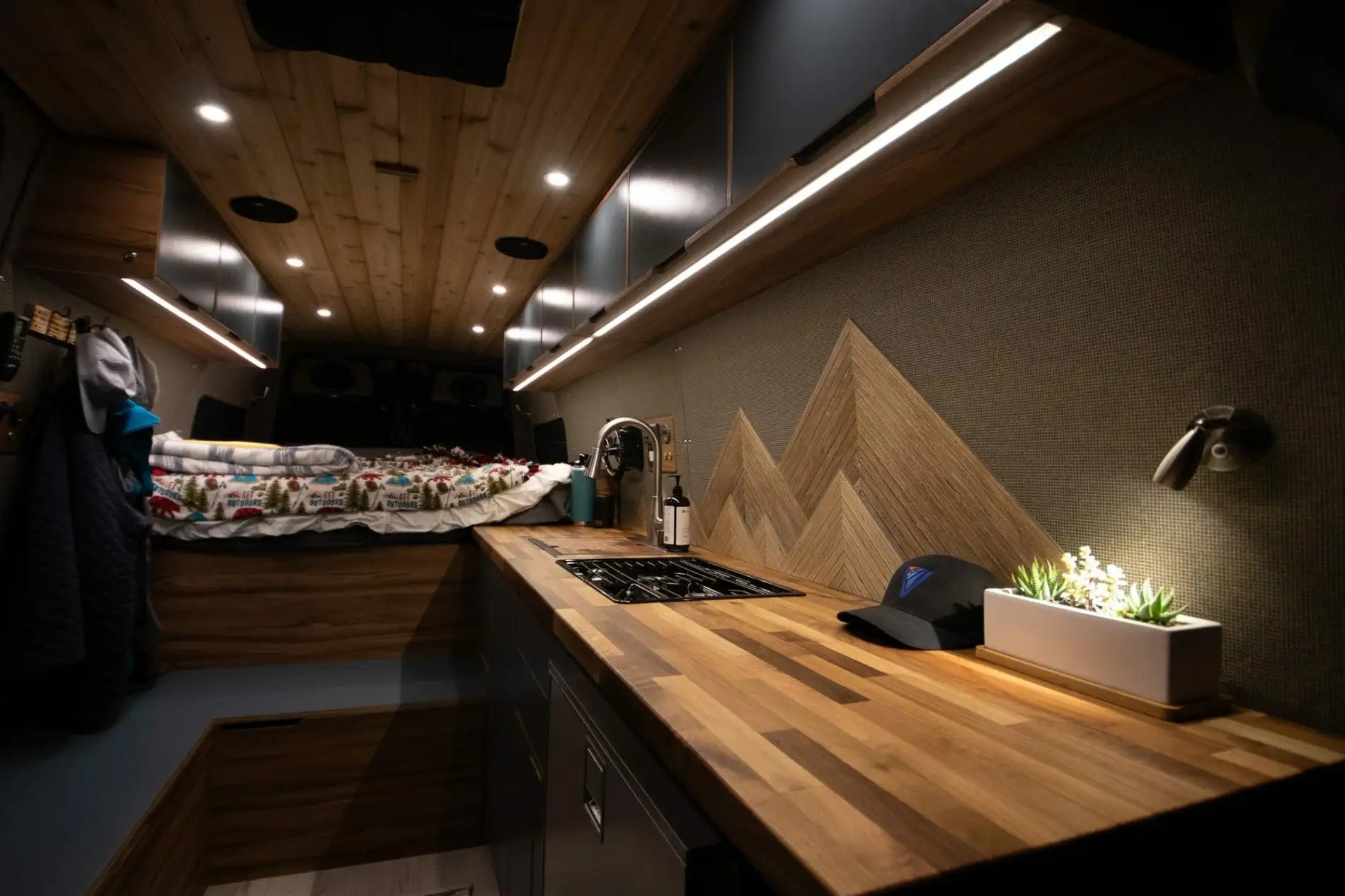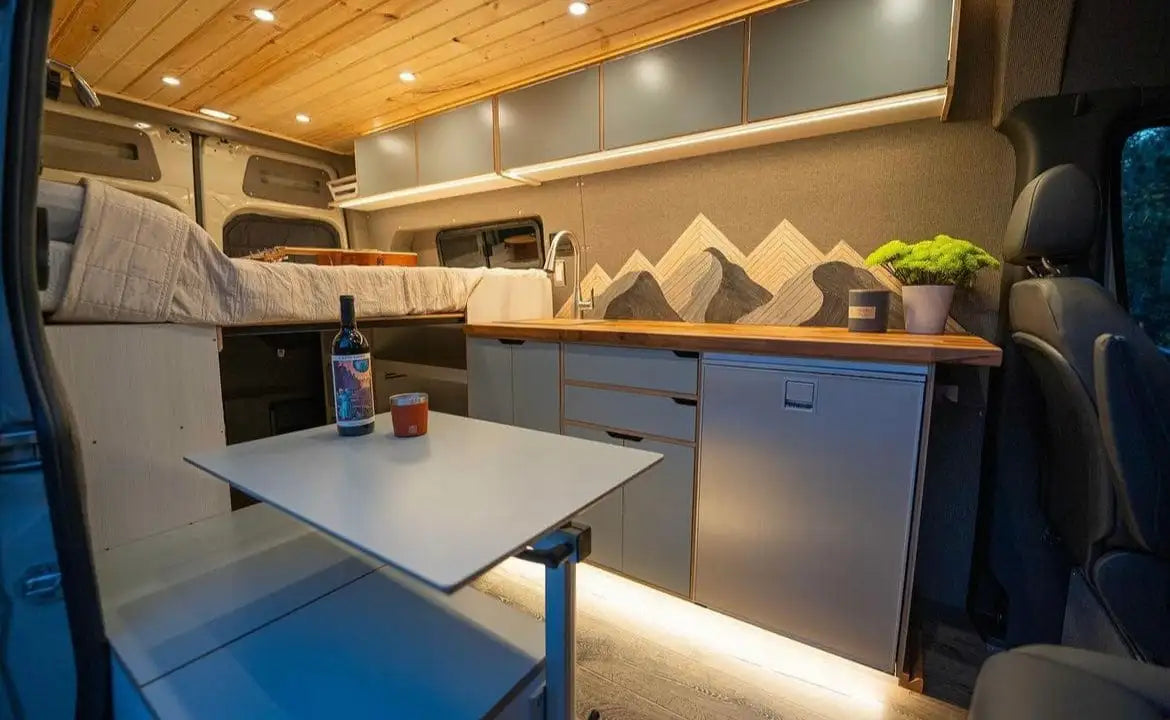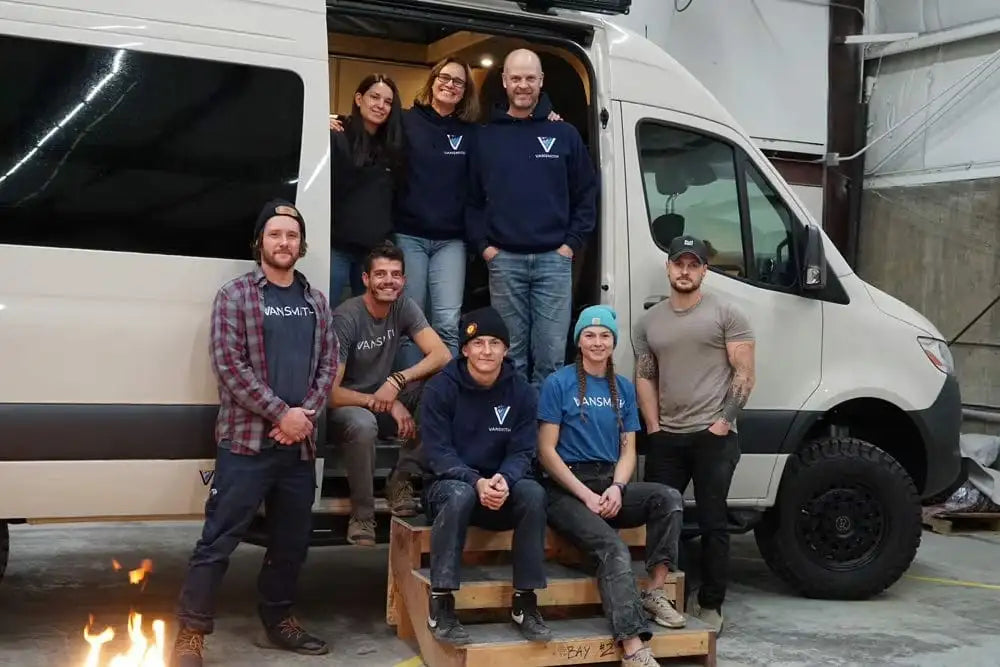
Dreaming about life on the open road? Whether you’re chasing mountain trails, beach sunsets, or cross-country adventures, learning how to convert a van to a camper puts the freedom of travel right in your hands. In this guide, we’ll walk you through every step—from planning and design to insulation, plumbing, and the final touches—so you can build a camper van that’s comfortable, functional, and uniquely yours.
What Should You Consider When Planning and Designing Your Camper Van?
Define Your Needs
Before buying materials or tools, take time to think about how you’ll use your van:
- Will you live in it full-time or take weekend trips?
- Do you need space for bikes, climbing gear, or a family of four?
- How much off-grid capability do you want?
At The Vansmith, we believe every van should be tailored to your vision. Our proven layouts are road-tested by countless adventurers, but they’re flexible enough for custom features.
Cost and Time Considerations
Converting a van into a camper can take anywhere from a few weeks to several months. The cost depends on your van choice, build complexity, and whether you DIY everything or hire help. A simple build might cost $10–$20k, while high-end conversions can exceed $70k.
Tip: Budget for unexpected costs—DIY often comes with surprises.
Choose Your Van
Picking the right van to convert to camper is the most important decision you’ll make. Popular choices:
- Mercedes Sprinter: Spacious, reliable, and available in multiple lengths.
- Ford Transit: Great value, high roof options, easier maintenance.
- Ram ProMaster: Wide interior, good for maximizing living space.
Our guide, What Is a Van Conversion? Options, Packages, covers these in detail.
Create a Layout
Once you know your needs, sketch your floor plan. Decide where your bed, kitchen, bathroom, and storage will go. Include space for electrical systems, water tanks, and insulation.
You can also check our Layouts page for inspiration.
Arrange Insurance
Many insurers require specific coverage for camper vans. Make sure your policy includes both the van and the conversion.
How Should You Prepare Your Van for Conversion?
Before you start building a camping van, you need a clean slate:
- Remove Seats & Panels: Strip the interior to the bare metal.
- Clean & Treat for Rust: Prevent problems before you cover walls and floors.
- Seal Holes: Keep out moisture and dust.
What Equipment Should You Buy for Your Camper Van Conversion?
Essential gear includes:
- Tools: Jigsaw, drill, rivet gun, level, clamps.
- Electrical: Solar panels, charge controller, batteries, inverter.
- Plumbing: Water pump, tanks, PEX tubing, sink, faucet.
- Furniture Materials: Plywood, bamboo, hinges, slides.
Our Guide to the Best Camper Van Toilet & Bathroom Options will help you choose the right bathroom setup.
How Do You Insulate and Ventilate Your Camper Van?
Insulation is the key to comfort. We recommend natural, sustainable materials like sheep’s wool, which regulates temperature and moisture.
Ventilation prevents condensation and keeps air fresh. Install a roof vent fan and, if possible, side windows that open.
At The Vansmith, we use eco-friendly materials to help you explore responsibly.
What’s the Best Way to Frame and Finish Van Walls?
- Framing: Use furring strips or lightweight aluminum framing.
- Wall Panels: Birch plywood is durable and light.
- Finishes: Bamboo or laminate can elevate the interior.

Unmatched craftsmanship matters here—poor framing can cause rattles and wear over time.
What’s the Process for Setting Up a Van Electrical System?
Steps:
- Design Your System: Calculate power needs for lights, fridge, outlets, and appliances.
- Choose Components: Solar panels, alternator charger, batteries, inverter.
- Install Safely: Use the correct wire gauges, fuses, and breakers.
Our team can install electrical systems designed for off-grid reliability—keeping you powered wherever the road takes you.
How Do You Install a Plumbing and Water System in a Van?
Basic systems include:
- Fresh Water Tank: 10–40 gallons.
- Grey Water Tank: For sink or shower drainage.
- Water Pump: 12V pump for consistent pressure.
- Hot Water Heater: Propane or electric.
Safety tip: Always use food-grade hoses and fittings.
How Can You Create Furniture and Add the Final Details to Your Van?
Build Furniture
Beds, benches, and storage units can be built from lightweight plywood. Hinged lids and slide-out drawers maximize space.
Add Final Touches
- Safety gear: fire extinguisher, CO detector.
- Comfort: blackout curtains, LED lights, soft bedding.
- Personal style: colors, textures, and décor that make it feel like home.
This is where turning a van into a camper really becomes your own.
Tips for a Successful Conversion
- Don’t be afraid to ask for help: Join forums or hire professionals for tricky installs.
- Focus on functionality and comfort: A beautiful van isn’t useful if it’s not practical.
- Research and learn from others: Blogs, YouTube, and van tours are goldmines of ideas.
- Take your time and do it right: Rushing often leads to costly mistakes.
Final Word
Learning how to convert a van into a camper van is a journey in itself. From the first stripped panel to the final pillow on your bed, the process is about creating a space that supports your adventures.
At The Vansmith, we blend innovative designs, unmatched craftsmanship, and sustainable practices to help you build the van of your dreams. Whether you need a custom layout, in-stock build, or just expert advice, we’re here to make your vision a reality.
FAQs
- What is the best small van to convert to a camper?
The Ford Transit Connect is a great small van option—easy to drive and park, yet adaptable for a compact build.
- Is it cheaper to convert a van into a campervan?
Yes, DIY can save money, but time, tools, and skills are required. A professional build may be costlier but offers speed, warranty, and expert craftsmanship.
- What is the best type of van to convert into a camper?
It depends on your needs. Sprinters are excellent for full-time travel, Transits for versatility, and ProMasters for width and interior space.
- How hard is it to build a camper van?
It’s a challenging but rewarding project. With planning, patience, and the right resources, most motivated DIYers can succeed.




